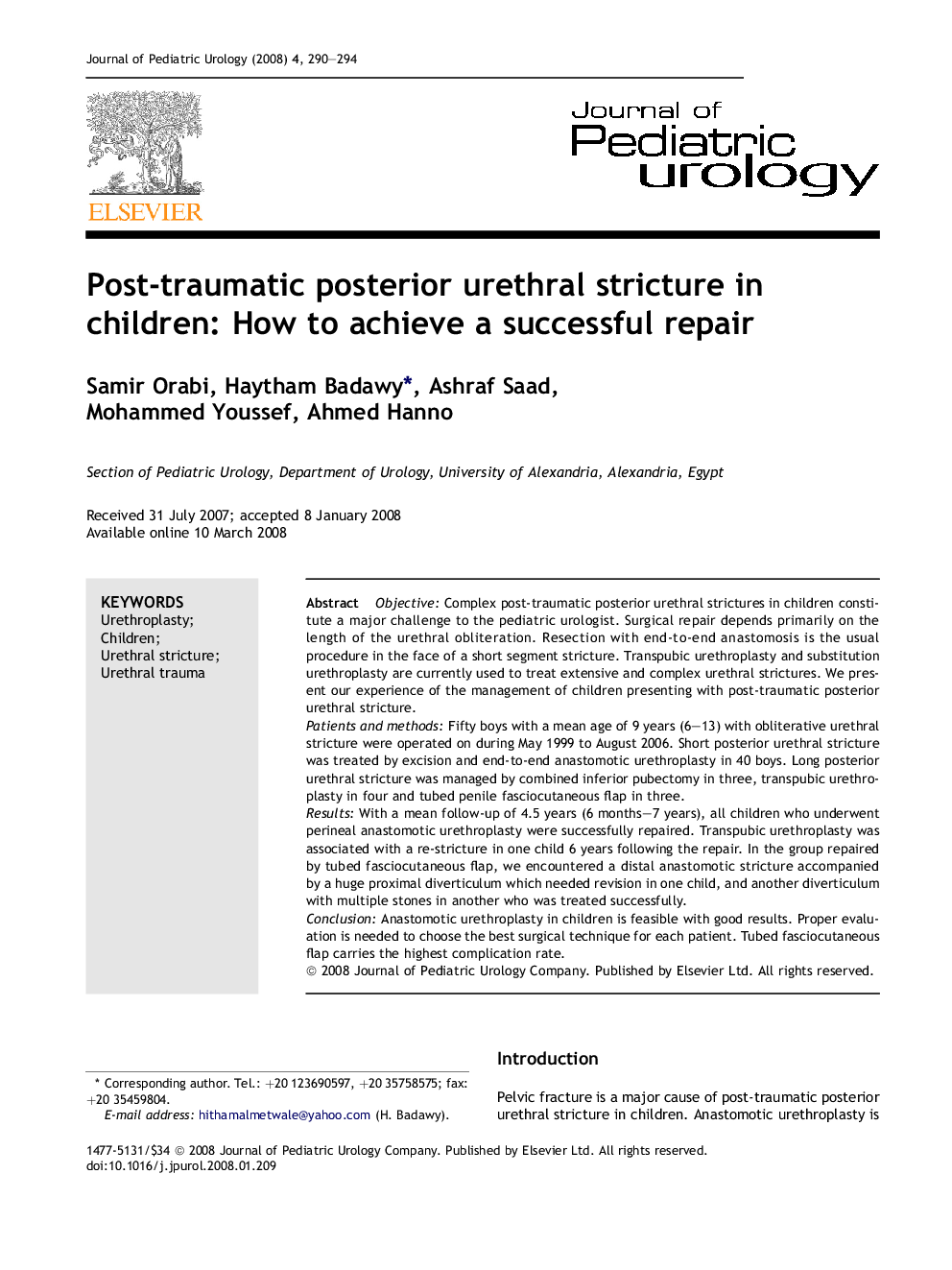| Article ID | Journal | Published Year | Pages | File Type |
|---|---|---|---|---|
| 4163407 | Journal of Pediatric Urology | 2008 | 5 Pages |
ObjectiveComplex post-traumatic posterior urethral strictures in children constitute a major challenge to the pediatric urologist. Surgical repair depends primarily on the length of the urethral obliteration. Resection with end-to-end anastomosis is the usual procedure in the face of a short segment stricture. Transpubic urethroplasty and substitution urethroplasty are currently used to treat extensive and complex urethral strictures. We present our experience of the management of children presenting with post-traumatic posterior urethral stricture.Patients and methodsFifty boys with a mean age of 9 years (6–13) with obliterative urethral stricture were operated on during May 1999 to August 2006. Short posterior urethral stricture was treated by excision and end-to-end anastomotic urethroplasty in 40 boys. Long posterior urethral stricture was managed by combined inferior pubectomy in three, transpubic urethroplasty in four and tubed penile fasciocutaneous flap in three.ResultsWith a mean follow-up of 4.5 years (6 months–7 years), all children who underwent perineal anastomotic urethroplasty were successfully repaired. Transpubic urethroplasty was associated with a re-stricture in one child 6 years following the repair. In the group repaired by tubed fasciocutaneous flap, we encountered a distal anastomotic stricture accompanied by a huge proximal diverticulum which needed revision in one child, and another diverticulum with multiple stones in another who was treated successfully.ConclusionAnastomotic urethroplasty in children is feasible with good results. Proper evaluation is needed to choose the best surgical technique for each patient. Tubed fasciocutaneous flap carries the highest complication rate.
